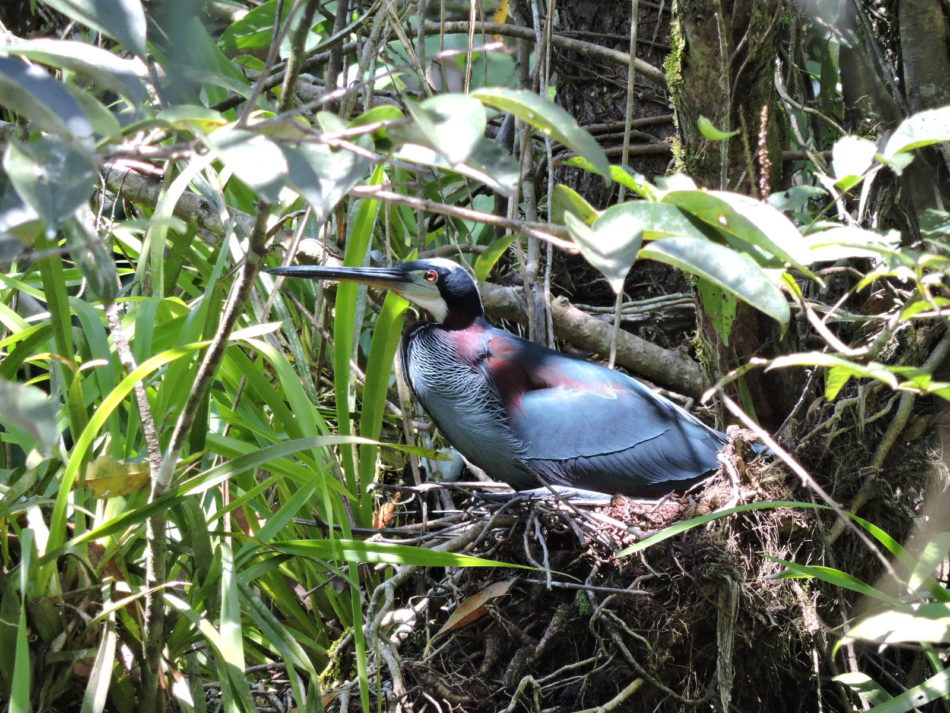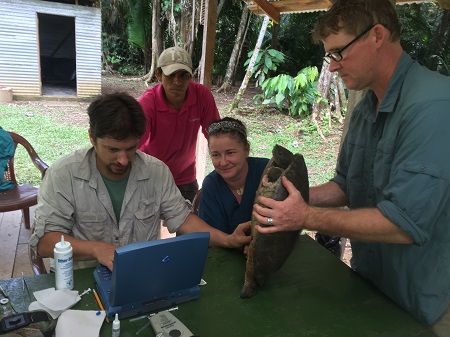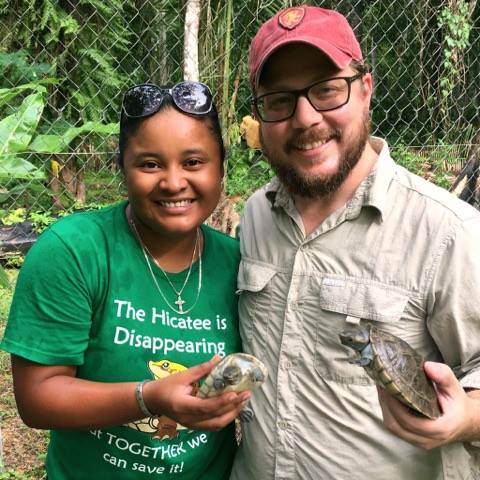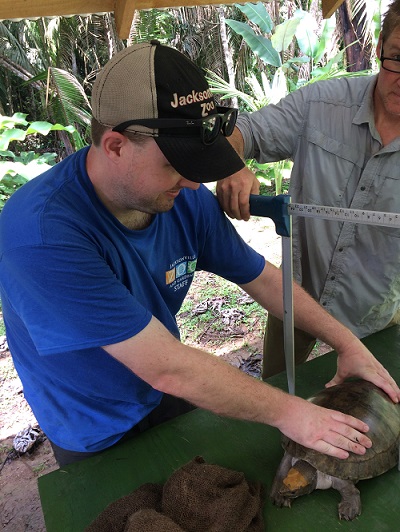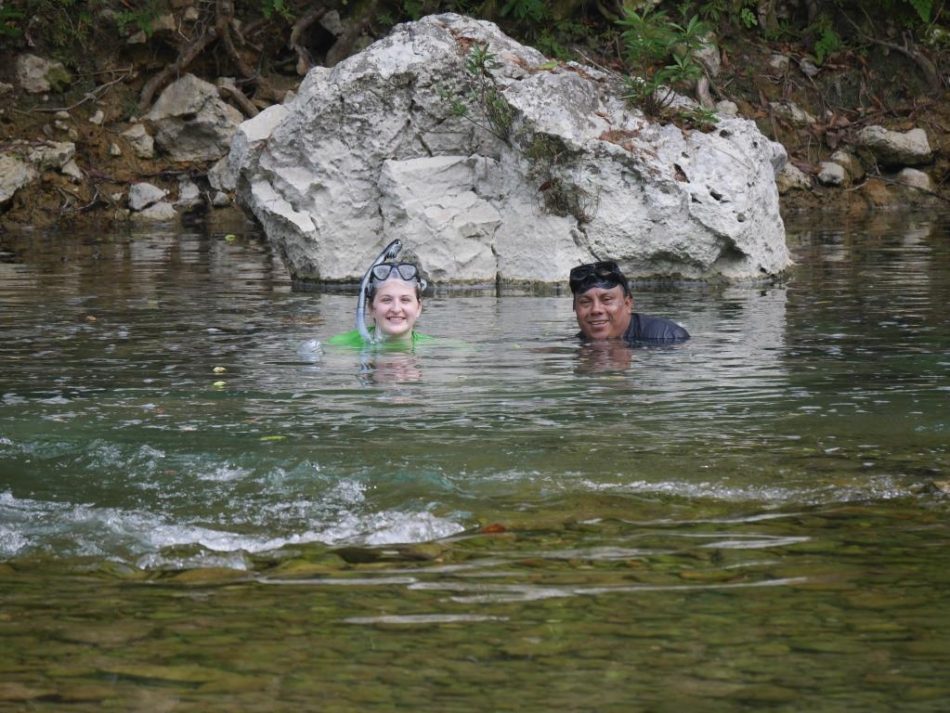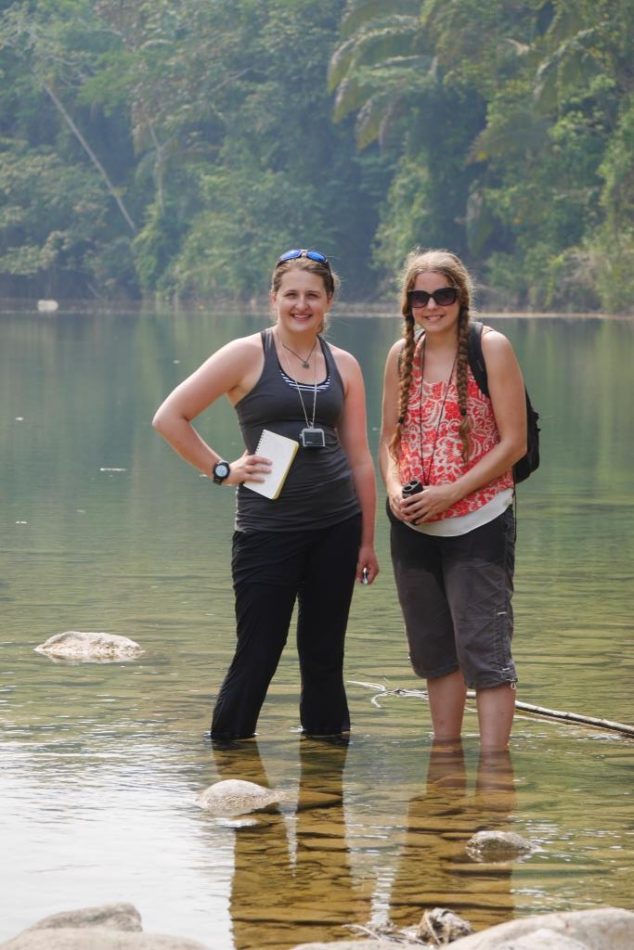Agami Heron Study at BFREE
During 2016, BFREE began gathering data on Agami Herons and their nesting site on the edge of BFREE’s property, the Agami Lagoon. Students, staff and other visitors have helped with the project by recording their observations and specifically by counting pairs and nests. Because Agamis are only at the lagoon during their nesting season – from approximately late May through the end of each year, many visitors were only able to document the birds’ absence. However, because there is also a healthy population of Boat-billed herons year-round, we have begun documenting their numbers as well.
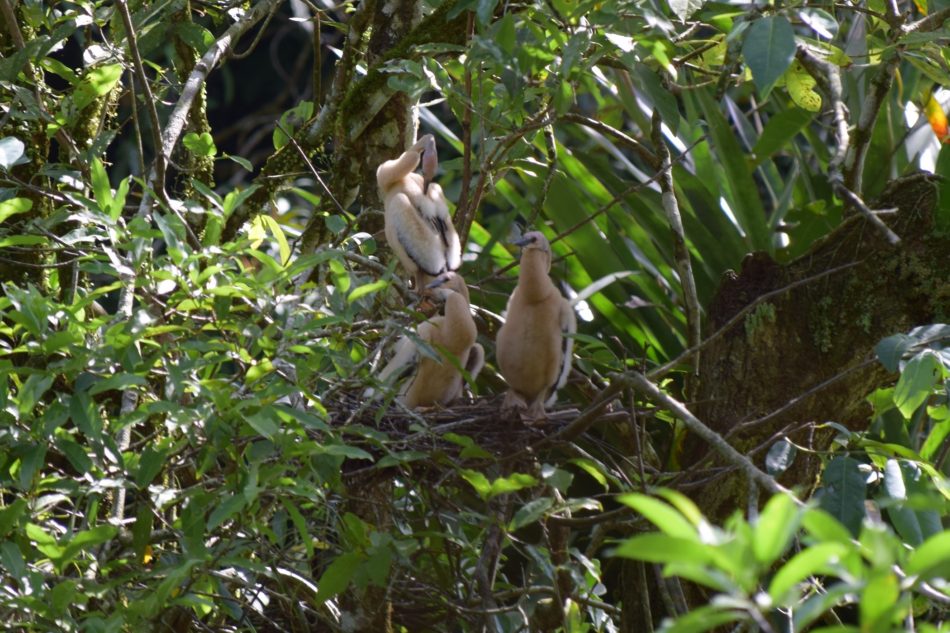
The Agami Lagoon is rich with wildlife. Three fledgling Anhingas were seen on a nest very close to the Agami Herons in September 2016.
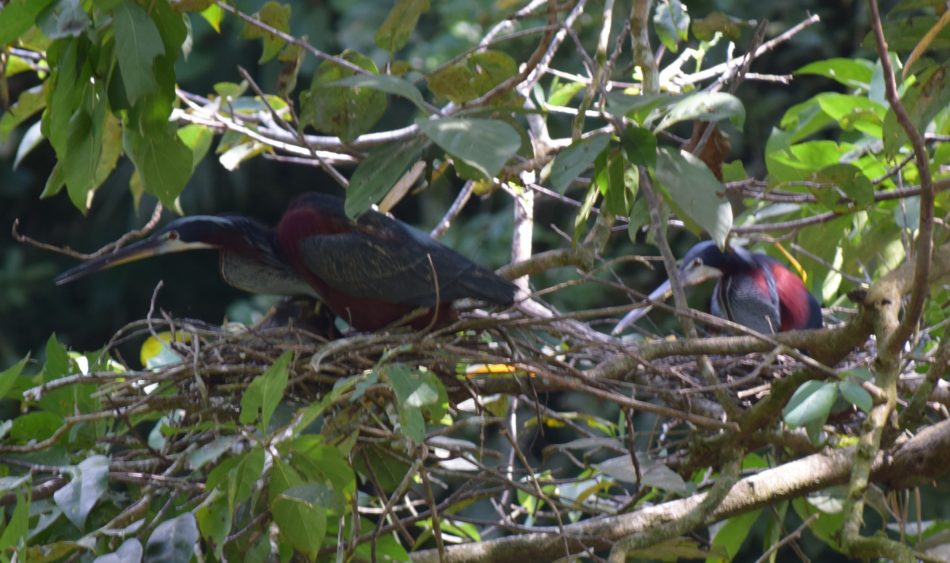
Nine nests with adult Agami Herons were observed throughout September 2016. Five fledglings and four eggs have been confirmed in the nests.
BFREE began this research after learning of the newly formed Agami Heron Conservation Working Group in late 2015 from Dr. Emily McKinnon, a bird biologist who completed her PhD research at BFREE. At that time, the working group had no documentation of nesting sites in Belize and they were eager for us to being collecting information that would help better their understanding of how many colonies exist. Heather Barrett is currently representing BFREE and reporting findings to the Working Group. We anticipate that the study will continue to develop in coming years.
The Agami Heron (Agamia agami) is a medium sized heron with stunning plumage. This reclusive bird is sometimes known as the chestnut-bellied heron, due to the color of its neck and underparts.
Information from the Agami Heron Conservation Working Group on the current conservation status:
The Agami Heron is considered to be Vulnerable by Birdlife International / IUCN Red List because the population is expected to decline rapidly over the next three generations due to loss of its habitat (as predicted by a model of Amazonian deforestation) and possibly also due to hunting (BirdLife International, 2012). Unfortunately, in fact, nearly nothing is known about population size or trend. However there can be no doubt that habitat destruction is its greatest threat, and that of the Amazon one of particular importance as it covers so much of its overall range. There is no information that suggests that the overall population is large, despite its large overall range. Perhaps more importantly, it is now documented to be a congregatory species, apparently dependent on few large colony sites scattered over its large range. This clearly makes it vulnerable to disturbances at those sites as well as to loss of feeding habitat associated with colonies and in the nonbreeding season. Evidence suggests that in some places (Peru) egg collecting affects local populations. Only a few colony sites now are known, and it is likely that its dependence on relatively few nesting sites, any of which may be subject to habitat loss, makes it vulnerable.
Click here to read the full Agami Heron Conservation Plan.

